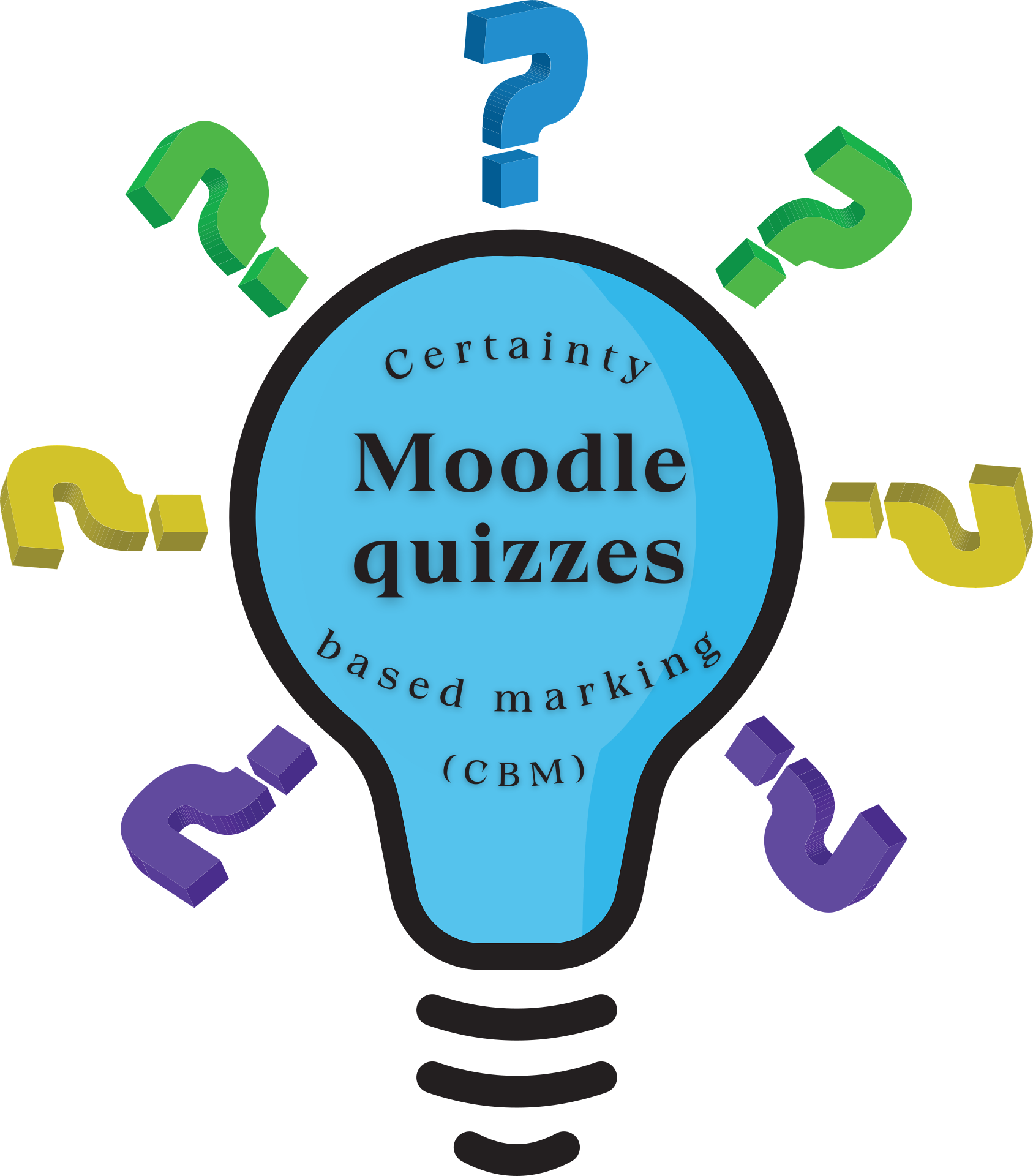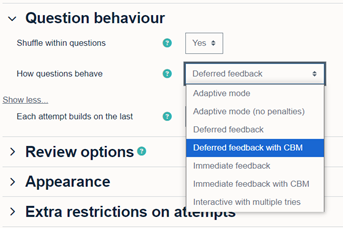
October 14, 2024, by Laura Nicholson
Enhancing Student Assessment with Certainty-Based Marking in Moodle Quizzes
(Estimated reading time – 3 min)
It’s Moodle Quiz Month on the Learning Tech Blog! Last week, we shared Helpful Hints and Tips to improve your formative quiz setup, and this week, we continue our focus on Moodle quizzes by turning our attention to question behaviours—exploring how they can shape the quiz experience and their impact on student performance. Let’s get started!
What is certainty-based marking (CBM)?
Certainty-based marking (CBM) is a grading method where students not only provide answers to questions but also indicate their level of confidence in the accuracy of their responses. This encourages more thoughtful responses and minimises the likelihood of scores being inflated through guessing because CBM will penalise incorrect answers if the student rated themselves as being highly confident in their response.
How does CBM work?
In CBM, students typically rate their certainty on a scale (e.g., 1-3, where 1 is Unsure and 3 is Quite Sure), and their final score depends not just on whether the answer is correct but also on how accurately their confidence aligns with the correctness of the response.
Here’s how it works:
- Correct answer with high certainty: Full marks for both correctness and confidence.
- Correct answer with low certainty: Fewer marks as the student doubts their answer and may be relying on guesswork.
- Incorrect answer with high certainty: Marks are deducted, as this demonstrates overconfidence.
- Incorrect answer with low certainty: No penalty, as the student acknowledges they are uncertain of the answer.
The final grade is adjusted based on their certainty, encouraging students to assess their own knowledge honestly in order to achieve the best possible score. This system rewards students for honest self-assessment and encourages careful thinking before answering. That said, carefully assess whether this approach is suitable for your students; while negative marking can discourage guessing, it may also disadvantage risk-averse students and contribute to increased stress.
How to enable certainty-based marking in Moodle quizzes
Moodle offers a built-in feature to enable certainty-based marking in quizzes. Here’s a step-by-step guide to help you implement it:
- Navigate to your Moodle module.
- Turn on Edit mode.
- Click Add an activity or resource.
- Select Quiz and fill in the quiz name and description. With CBM, it is crucial that students understand how the marking strategy works. So, it’s a good idea to add instructions in the description section (or as part of your course content) to ensure clarity. You could include a worked example of how the marking will be applied and also take the opportunity to remind students that honest self-assessment is key.
- Configure the settings such as Timing, Grade, and Layout.
- Under Question behaviour, open the drop-down menu for How questions behave. From here, you have the option to select Deferred feedback with CBM or Immediate feedback with CBM.
- Save and Preview the Quiz to ensure everything works as expected.
For Deferred feedback with CBM, students have to complete and submit the entire quiz before receiving a grade or any feedback.
If Immediate feedback with CBM is selected, an additional drop-down menu appears, where you can decide whether you will allow a redo within an attempt. This enables students to have a go at another question following the feedback.
After the quiz, Moodle’s analytics show how students performed, both in terms of correct answers and their certainty levels. This can provide valuable insights into areas where students are overconfident or unsure, allowing for targeted feedback and additional support.
Conclusion
Be sure to check back next week when we’ll evaluate the effectiveness of Adaptive Mode as a quizzing strategy.
If you are interested in finding out more on CBM, take a look at Moodle’s guidance on Using certainty-based marking.
No comments yet, fill out a comment to be the first


Leave a Reply